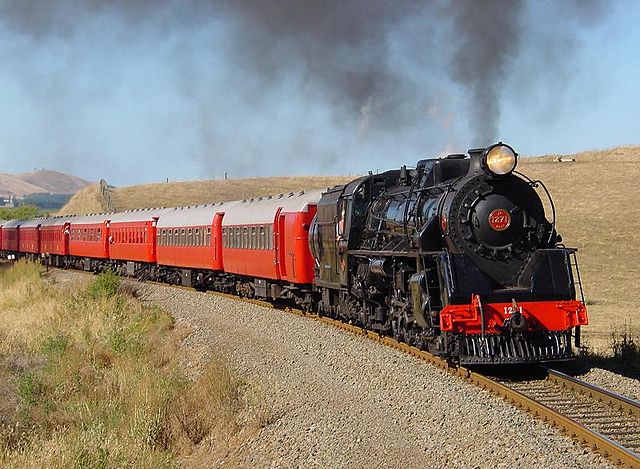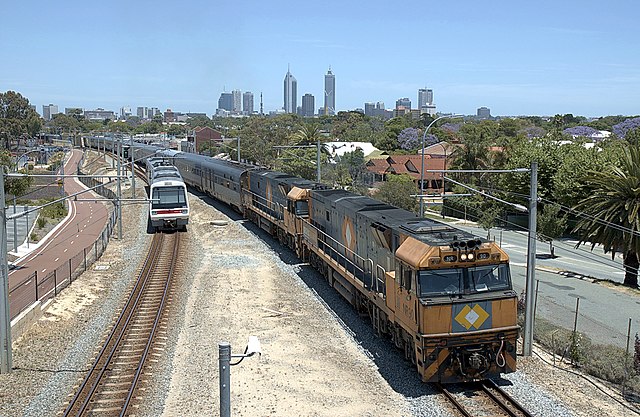Rail transport in Costa Rica
Rail transport in Costa Rica is primarily under the stewardship of Incofer, an autonomous institution of the state. Incofer owns the national railway infrastructure and operates virtually all freight and passenger services, which consist primarily of commuter trains through the highly populated Central Valley. The whole Incofer network is 1,067 mm narrow gauge, although there are several small tourist railways of other gauges.
First Mortgage Debenture of the Costa Rica Railway Company Ltd., issued 10 January 1888
Train arriving into the Sabana-Contraloria station in San Jose.
Universidad de Costa Rica station, San Pedro, Montes de Oca
Interior of an Incofer Apolo 2400 type DMU
Railways with a track gauge of 3 ft 6 in were first constructed as horse-drawn wagonways. The first intercity passenger railway to use 3 ft 6 in was constructed in Norway by Carl Abraham Pihl. From the mid-nineteenth century, the 3 ft 6 in gauge became widespread in the British Empire. In Africa it became known as the Cape gauge as it was adopted as the standard gauge for the Cape Government Railways in 1873, although it had already been established in Australia and New Zealand before that. It was adopted as a standard in New Zealand, South Africa, Indonesia, Japan, the Philippines, Taiwan, and Queensland in Australia.
JA1271 with excursion consist climbing the Opapa incline in New Zealand
Tram descending the Great Orme Tramway
Dual gauge track in Perth Australia with both 3ft 6in and standard gauge
Dual gauge track in Sakhalin Oblast including both 3ft 6in and Russian gauge








